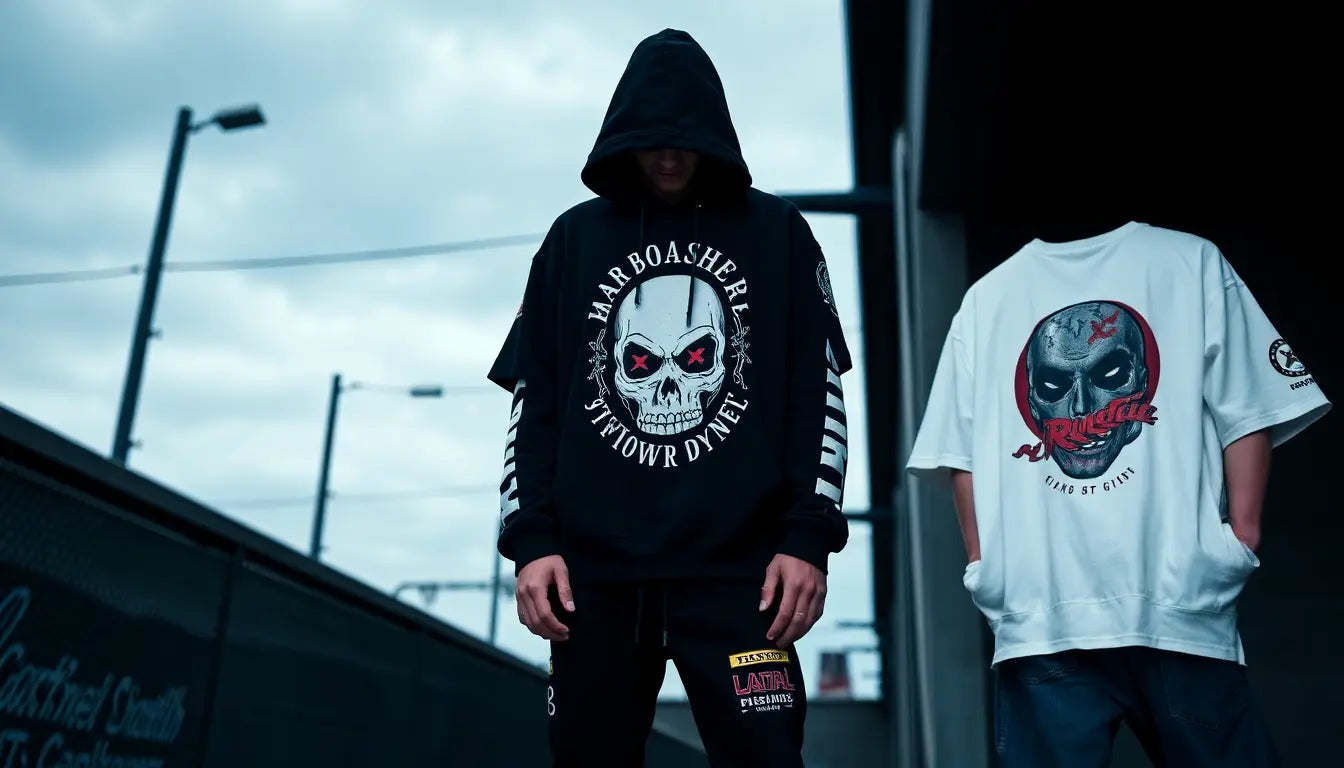
Tommy Lee Sparta’s Merch and the New Caribbean Streetwear Economy: How Drops, Designers, and Fan Culture Fuel a Global Trend
Introduction
In 2025, Caribbean culture has transcended music and become a potent force in global streetwear. One of the clearest examples is the merch ecosystem around Tommy Lee Sparta. What started as artist-driven apparel has evolved into a sophisticated intersection of drops, designer collaborations, direct-to-consumer commerce, and activist fan communities. This article unpacks how Tommy Lee Sparta’s merch strategies reflect wider shifts in the Caribbean streetwear economy, and maps practical tactics for artists, designers, entrepreneurs, and fans who want to participate or replicate the model.
Why Tommy Lee Sparta’s Merch Matters
Tommy Lee Sparta is a case study for several reasons. His music brand has an international audience, but his merch succeeds because it leans into cultural specificity, scarcity mechanics, and community participation. The products are not simply concert souvenirs; they are curated statements that communicate identity. For the Caribbean streetwear economy, that means apparel becomes a vehicle for cultural export, creative entrepreneurship, and sustainable local value creation.
A Brief History of Artist Merch and Caribbean Streetwear
The late 2010s and early 2020s saw a global shift from generic artist tees to limited-edition drops and designer collaborations. Simultaneously, Caribbean musicians began experimenting with apparel beyond festival stalls: capsule collections, collaborations with diasporic designers, and small-run production with local ateliers. By 2025, these practices matured into a recognizable economy where artists, designers, manufacturers, and fans are co-dependent participants in a value chain.
The Anatomy of a High-Impact Drop
Drops are central to modern streetwear. Tommy Lee Sparta’s most effective releases share these core elements:
- Clear Narrative: Every drop connects to a story — an album, a movement, a visual, or a personal milestone.
- Limited Supply: Scarcity creates urgency and secondary-market demand while preserving brand equity.
- Tiered Offerings: Public releases, limited artist-signed runs, and VIP bundles create multiple price points and exclusivity layers.
- Integrated Multimedia: Drops use music videos, short films, and social content to make the product an integral part of the artistic moment.
- Direct-to-Fan Channels: Using artist-owned stores or verified platforms ensures data capture and better margins.
- Surprise and Announcement Balance: A cadence of teased hints, countdowns, and surprise elements maximizes buzz without fatiguing the audience.
Design Collaborations and Cultural Authenticity
One reason Tommy Lee Sparta’s merch resonates is its authenticity. Collaborating with Caribbean designers, illustrators, and fabric specialists ensures that designs feel rooted rather than appropriative. These collaborations can be structured as limited co-branded capsules, artist-curated collections, or continuous partnerships that elevate local design talent.
- Designer Spotlight: Highlight designers on product pages and in press materials to build credibility and narrative depth.
- Co-Creation: Invite designers and fans into the creative process through design contests, prototype previews, and community voting.
- Heritage & Storytelling: Use product tags, lookbooks, and video content to explain materials, techniques, and cultural references.
Manufacturing and Supply Chain: Balancing Local Craft and Scale
Scaling a streetwear line from the Caribbean requires tradeoffs between local production and global fulfillment. Small-batch local manufacturing preserves authenticity and creates jobs, but global customers expect reliable shipping and consistent sizing. Successful brands adopt hybrid models:
- Small-Batch Local Runs: Limited collections made locally to maintain provenance and craft.
- Partnered Outsourcing: For high-demand baseline items, partner with ethical overseas manufacturers while enforcing quality standards and brand guidelines.
- Print-On-Demand for Low-Risk SKUs: Use POD services for low-volume variants to reduce inventory risk, while keeping flagship pieces in-house.
- Quality Control & Fit Programs: Maintain consistent sizing by using standardized measurements and producing physical fit samples for different markets.
Sustainability, Material Choices, and Ethical Production
Sustainability is no longer optional. Consumers expect transparency about materials, labor practices, and environmental impact. Tommy Lee Sparta–style brands can lead by example by:
- Using organic or recycled fabrics where feasible.
- Offering repair programs and limited restocks to reduce waste.
- Documenting the supply chain with short films and product stories.
- Prioritizing fair wages and safe working conditions for local partners.
Fan Culture as Active Co-Creation
Fans are the primary engine of the streetwear economy. They generate content, fuel trends, and shape desirability. Effective strategies to harness this energy include:
- Fan-Driven Drops: Let superfans vote on colorways or prints for limited runs.
- Community Platforms: Use Discord, Telegram, or fan forums for exclusive chats, design previews, and early access codes.
- User-Generated Content Campaigns: Encourage fans to post their fits with specific hashtags and reward top contributors with exclusive merch or event invites.
- Pop-Ups and Local Events: Transform merch into shared experiences through listening parties, pop-up shops, and community markets.
Monetization Models Beyond Direct Sales
Merch can generate revenue in multiple ways beyond straight retail:
- Collaborative Capsules: Partner with established brands for co-branded releases that come with revenue splits and cross-audience exposure.
- Subscription Boxes: Offer seasonal drops or VIP boxes with exclusive apparel, handwritten notes, or digital content.
- Licensing: License designs for wider distribution or special categories like footwear or accessories.
- Experiential Bundles: Combine merch with tickets, meet-and-greets, or exclusive content to increase average order value.
Distribution, Shipping, and Global Logistics
Getting Caribbean-made merch into international hands requires careful planning:
- Fulfillment Partners: Use third-party logistics in key geographies for faster delivery and lower shipping costs.
- Customs and Duties: Clearly state customs policies and calculate duties at checkout to avoid surprise fees for buyers.
- Local Pickup and Pop-Ups: Offer localized pickup points or pop-ups in diasporic hubs to create physical access points.
- Transparent Timelines: Set expectations for limited drops that rely on local production, and offer tracked shipping as standard.
Pricing Strategy and the Resale Market
Pricing must balance accessibility and brand equity. Limited editions can command premium pricing, while baseline essentials should remain affordable for broad fan adoption. Consider these tactics:
- Use tiered pricing: baseline items, limited capsules, and ultra-limited artist-signed pieces.
- Introduce loyalty pricing or early-access discounts for superfans.
- Monitor secondary marketplaces to understand demand and calibrate scarcity.
- Implement authentication tags or NFC chips for high-value pieces to control counterfeits and maintain resale value.
Brand Protection: IP, Counterfeits, and Authentication
As demand grows, counterfeit risk increases. Protecting brand integrity involves both legal and technical measures:
- Register Trademarks: Secure trademarks for logos and key phrases in priority markets.
- Digital Authentication: Use QR codes, NFC tags, or blockchain-based provenance to verify authenticity.
- Official Storefronts: Maintain a verified DTC store and publish a list of authorized retailers.
- Enforcement Strategy: Monitor marketplaces and issue takedown notices when needed.
Marketing and SEO: How to Rank and Convert
To drive organic traffic and convert visitors into buyers, combine creative storytelling with technical SEO. Here are actionable steps:
- Keyword Strategy: Target a mix of head and long-tail keywords such as tommy lee sparta merch, caribbean streetwear drops, jamaican streetwear brands, limited edition dancehall apparel, and buy tommy lee sparta hoodie.
- Content Plan: Produce behind-the-scenes posts, designer interviews, lookbooks, how-to-style guides, and drop recaps to build topical authority.
- Technical SEO: Optimize site speed, implement schema for products and events, and ensure mobile-first design.
- Rich Product Pages: Include designer bios, origin stories, high-quality photos, sizing guides, and videos to increase dwell time and conversions.
- Backlink Strategy: Pursue features in fashion and music publications, collaborate with influencers, and sponsor cultural events to gain relevant links.
- Social Commerce: Use Instagram Shops, TikTok Shopping, and YouTube product integrations to reduce friction between discovery and purchase.
Suggested Content Calendar and Blog Topics
To support SEO and fan engagement, publish consistent, thematic content. Example monthly topics:
- Drop Announcement and Lookbook
- Behind the Design: Interview with the Maker
- How to Style Jamaican Streetwear: 5 Fits for Global Cities
- Tour Merch Recap: Limited Editions and Fan Stories
- Material Spotlight: How Sustainable Fabrics are Changing Caribbean Fashion
- Collector’s Guide: Authenticity, Resale, and Care
- Pop-Up Review: Highlights from London, Toronto, and Miami Events
- Designer Roundtable: The Future of Caribbean Streetwear
- Community Spotlight: Fan Creators and UGC Shoutouts
- Industry Trends: How Music Drives Fashion in 2025
Platforms and Tech Stack Recommendations
Select tools that support drops, fan engagement, and fulfillment.
- ECommerce: Shopify or headless commerce for flexibility and integrations.
- Payment: Multi-currency payment gateways and localized options for key markets.
- Inventory: Use inventory systems that support limited drops and bundled SKUs.
- CRM: Email and SMS platforms to manage drop notifications and VIP access.
- Community: Discord or Telegram for real-time engagement and gated channels for superfans.
- Analytics: Implement GA4, enhanced eCommerce tracking, and conversion funnels to measure performance.
Key Performance Indicators for Merch Success
Track both creative and commercial metrics:
- Sell-through rate by SKU and drop
- Average order value and repeat purchase rate
- Customer acquisition cost and lifetime value
- Social engagement, UGC volume, and hashtag reach
- Conversion rates from product pages and social channels
- Secondary-market activity for limited pieces
Case Framework: Sample 12-Week Drop Campaign
Here is a practical timeline artists can adapt:
- Weeks 1-2: Concept and design. Work with designers, source materials, and finalize sketches.
- Weeks 3-4: Manufacturing prep. Produce samples, run quality checks, prepare packaging and authentication tags.
- Weeks 5-6: Tease. Release trailers, behind-the-scenes content, and set a drop date. Collect pre-launch emails.
- Week 7: Early access for VIPs and superfans via community channels.
- Week 8: Public drop. Launch product pages, livestream the release, and push paid social ads.
- Weeks 9-10: Sustain. Release styling guides, user-generated content, and highlight international pop-up dates.
- Weeks 11-12: Wrap and analyze. Report KPIs, collect fan feedback, and plan the next capsule based on learnings.
Practical Checklist for Artists and Brands
- Create a brand story document that ties merch to music and culture.
- Choose a mix of local and outsourced production methods to balance authenticity and scale.
- Plan drops with a clear narrative arc and multiple access tiers.
- Invest in product photography, video, and designer spotlights to increase perceived value.
- Set up robust fulfillment and returns processes to maintain customer trust.
- Protect IP and use authentication technology for high-value items.
- Measure results and iterate: know which drops build brand equity vs which drive revenue.
Risks and Challenges to Anticipate
No model is without risk. Be prepared for:
- Supply chain delays affecting drop timelines.
- Counterfeits and unauthorized sellers diluting brand equity.
- Over-reliance on one market or platform for sales.
- Fan fatigue if drops are too frequent or poorly differentiated.
What This Means for the Caribbean and the Global Fashion Landscape
The success of Tommy Lee Sparta’s merch model signals a broader shift: Caribbean creatives are leveraging music-driven culture to build sustainable fashion economies. This movement amplifies local talent, creates jobs, and reshapes how global consumers discover and value fashion rooted in specific places and stories. As creative entrepreneurs adopt digital commerce tools and strategic partnerships, Caribbean streetwear will continue to influence mainstream fashion, bringing new aesthetics and business models into the global conversation.
Conclusion and Next Steps
The intersection of Tommy Lee Sparta’s merch strategies and the rising Caribbean streetwear economy offers a blueprint for culturally rooted, commercially viable fashion. To participate, artists should consider investing in authentic design partnerships, deliberate drop strategies, and fan-led community building. Designers and manufacturers should seek collaborative opportunities and sustainable practices. Fans and collectors can support the ecosystem by buying through verified channels and amplifying creators. The result is a resilient, creative economy that honors culture while competing on the global stage.
Resources and Further Reading
- Guides on building DTC stores and running limited drops.
- Articles on sustainability practices for small fashion labels.
- Interviews with Caribbean designers and production partners.
- Technical SEO checklists for product pages and drop announcements.
Call to Action
If you are an artist, designer, or entrepreneur inspired by this model, start by mapping one capsule collection that tells a specific story. Engage one local designer, plan a single limited drop, and commit to measuring the results. For fans, join official channels and support verified drops to help build a sustainable Caribbean streetwear economy that benefits creators, makers, and communities.



